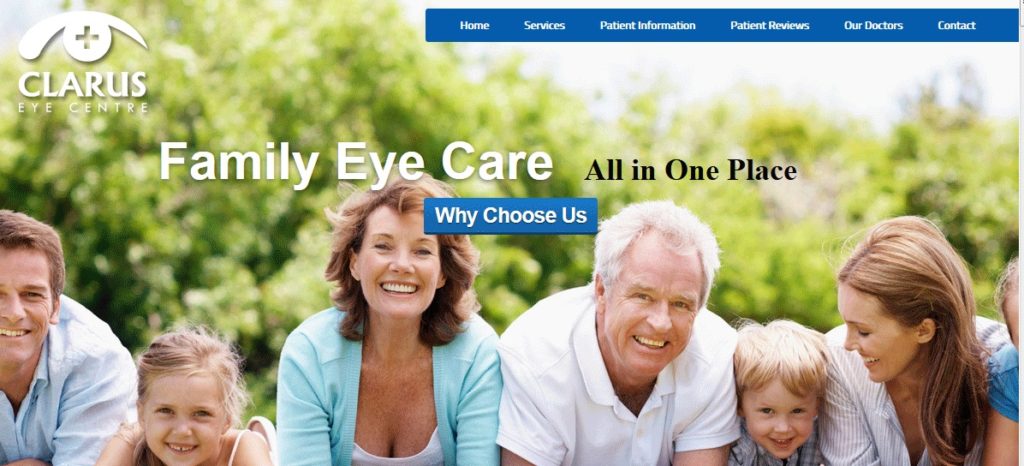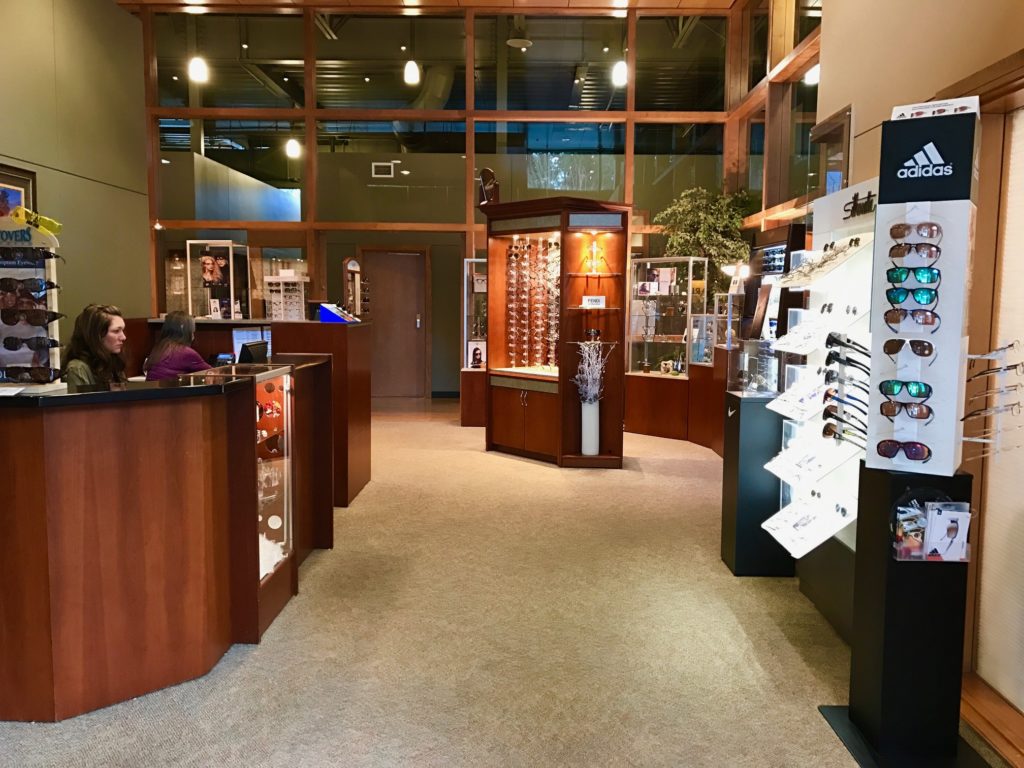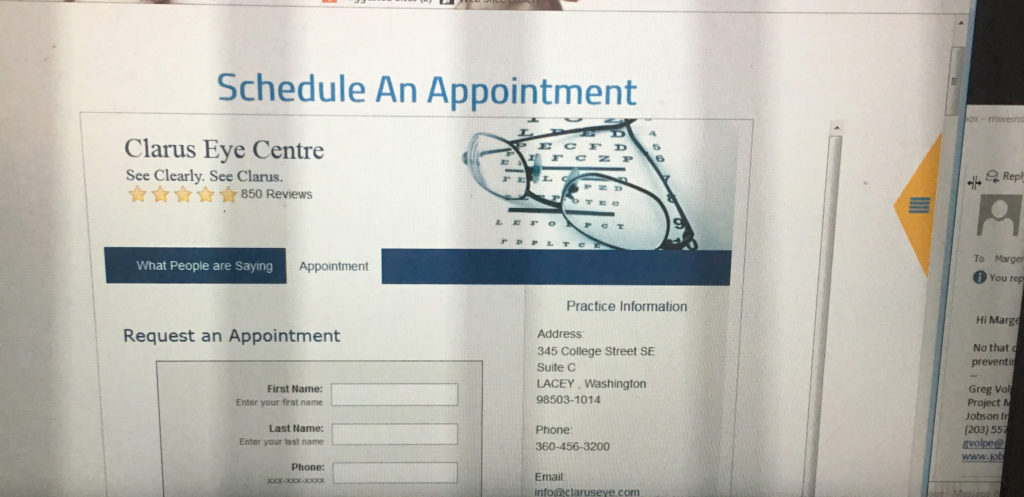March 15, 2017
Managed vision and medical care plans are a huge part of most optometric practices today. Our 10-doctor, shared OD-MD practice in Lacey, Wash., Clarus Eye Centre, is no different. Fifty-six percent of our patient base has some form of managed vision insurance plan. Creating a strategy for deciding which plans to accept, when to stop accepting a plan and how best to optimize patient coverage–while finding ways to boost revenues by selling extras not covered by insurance–helps us remain profitable.
The keys: Carefully consider which plans are–and are not–profitable to accept, train to ensure accurate coding and maximum reimbursement, help patients optimize use of their insurance and find ways to generate additional revenues to make up for low reimbursements.

Manthe says her practice, Clarus Eye Centre, educates patients on the most advanced spectacle lens options to provide superior care. Doing so also generates revenues that offset the often low reimbursements provided by managed care.
Decide What to Accept & What to Drop
At Clarus, we are on 32 insurance company panels. The most commonly utilized plans at our facility are Aetna, Cigna CHPW, Medicare, Regence, Soundpath Health, Tricare, Uniform Regence and VSP.
Editor’s note: Most practice have about 10 managed care plans that are accepted. The more medical eyecare you provide, and your part of the country, can boost that number.
Over the years we have dropped some insurance plans from the practice. In one case, the insurance company stopped allowing optometrists to do the eye exam under the plan required, but continued allowing ophthalmologists to do so. That didn’t work for our patient flow, or for continuity of care, so we chose to drop that plan.
Deciding what vision plans to accept can be daunting. Since so many vision plans have lower reimbursements, and high contractual write-offs, we are selective on the vision plans we contract with, allowing only the most utilized in our region.

The optical in Manthe’s practice. Doctors in the practice educate patients about all of their spectacle lens and sunwear options.
Enforce & Train for Careful Coding
A major part of remaining profitable while accepting managed care plans is ensuring your practice codes correctly for reimbursement. We have a billing manger, patient account supervisor, as well as a patient service supervisor, who oversee practice management, including billing and coding.
In 2016 we performed a total of 21,500 exams at our single location. Our supervisors and managers set up training. We access the training provided by the managed vision care providers, provided by our EHR, and also the procedures and protocol we have set up through our own practice.
Medical versus vision coding can create confusion in the office for billing. If a 99 code is used, the vision plan will deny immediately. In turn, if a 92 code is used on a medical claim, nine out of 10 times it will be refused for the companies in our region. Our Patient Account Representatives (PARs) have been crossed-trained to know what codes will be accepted and which will be denied. The PARs also review outstanding claims monthly to ensure nothing falls through the cracks.
Along with thorough training on proper coding, your EHR can help. Our EHR program validates claims. It then verifies the correct level of coding, the diagnosis and patient demographics in the system. Once it is submitted to the clearing house we use, it goes through another authentication process prior to submission to the insurance companies. We receive reports daily to reconcile accepted or rejected claims for maximum reimbursement.
Help Patients Optimize their Insurance
When a new patient calls for an appointment, we enter their insurance information in the EHR demographic screen in our system. If at that time the patient has questions regarding their insurance, we have the PAR filter any additional questions they may have prior to their appointment. We let patients know that their coverage is between themselves and their insurance company. We will do our best to assist them in accessing their benefits, and explaining their coverage, but it is in our policy that it is ultimately the patient’s responsibility. If the patient has further questions we recommend they also call their insurance company.
The optician will authorize the benefit on the day of the appointment to see what eyewear, if any, the patient is eligible for at the time of service. The optical staff will then go over in greater detail with the patient exactly what is, and isn’t, covered in eyewear. This happens after the exam and the doctor’s recommendations.
We continue to stay focused on what is best for the patient’s vision, eye health and lifestyle based on what the doctor has prescribed in the exam chair. Explaining the doctor’s product recommendations in terms of vision and eye health can sometimes allay cost concerns.
Generate Income to Make Up for Low Reimbursements
Even after carefully considering which plans to accept, and which to drop, and then making sure the maximum possible reimbursements are attained through proper billing and coding, you still may be adversely affected by low reimbursements.
Our average reimbursement for comprehensive exams is $270, and $71.50 from managed vision care plans.
So, you need to come up with ways to make up for limited revenues. In our practice, one of the ways we do this is by selling advanced spectacle lens technology.
Most of the insurance plans do not cover lens add-on options for our patients. At Clarus, we handle the recommendations to our patients for their lenses on an individual basis according to their lifestyle and needs. The doctor prescribes based on of the patient’s prescription needs and eye health. The options are then printed on the patient’s prescription. The opticians ensure that the recommendations that the doctor has educated the patient about in the exam room are then thoroughly discussed. Focusing on a complete visual solution for the patient puts the emphasis on the value of the product, not the cost.
We promote not only the Transitions Family of Products for everyday wear, but also polarized options for our patients. Transitions Signature blocks at least 20 percent of harmful blue light in its clear state, and 85 percent outdoors. Transitions XTRActive and Vantage block 34 percent in its clear state, XTRActive blocks 88 -95 percent of harmful blue light and Transitions Vantage blocks 85 percent. We pair that with non-glare with blue light protection from a lens like Prevencia.
In the spring, our optical does a “Here Comes the Sun” promotion focusing on UV and Blue light protection. Clarus also does education segments call “Eyes on Health” in our community throughout the year. These are live speaking engagements given both by our ophthalmologists and optometrists. This increases awareness in our community, and among patients, of the need for blue light and UV protection.
Along with advanced spectacle lens technology, our opticians are trained on how to present higher price point frames, sell multiple pairs of glasses (sunwear, occupational, etc.) and plano sunwear to contact lens wearers.
 Kimberly Manthe, ABO, is the practice administrator at Clarus Eye Centre, the 2013 Transitions Practice of the Year, in Lacey, Wash. To contact: KimM@claruseye.com
Kimberly Manthe, ABO, is the practice administrator at Clarus Eye Centre, the 2013 Transitions Practice of the Year, in Lacey, Wash. To contact: KimM@claruseye.com
























